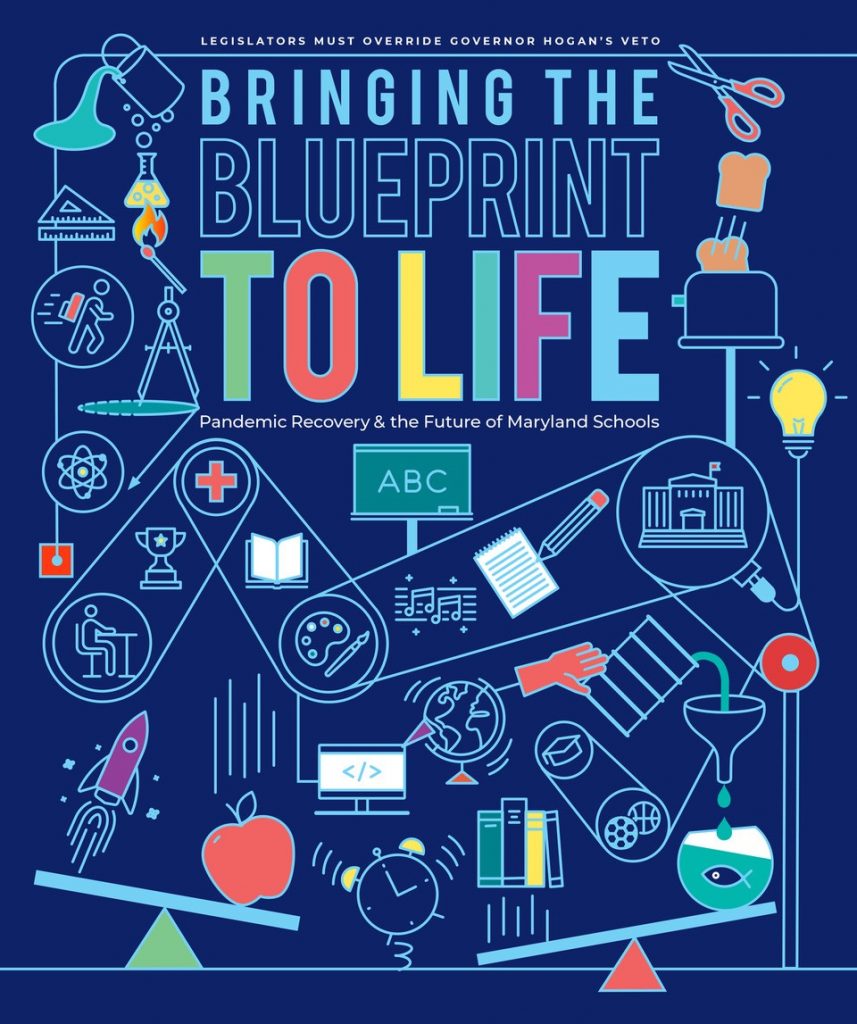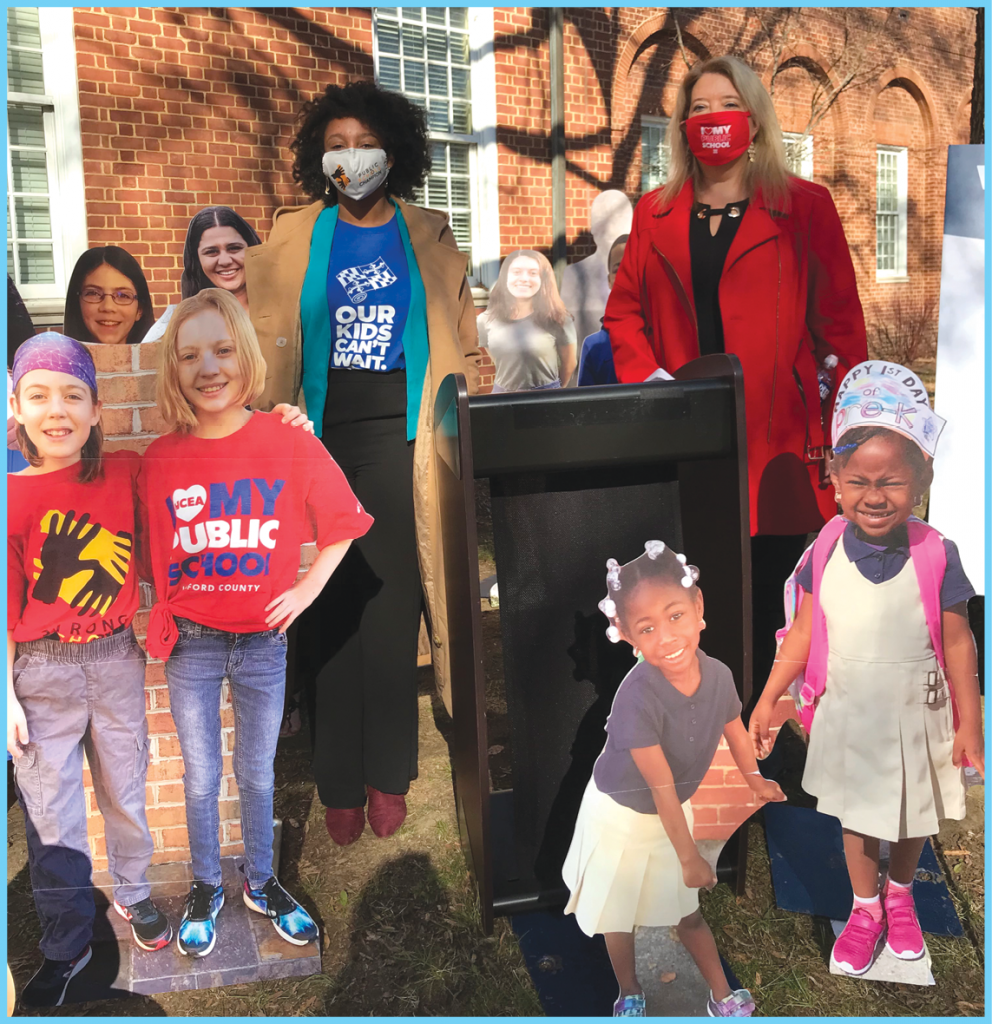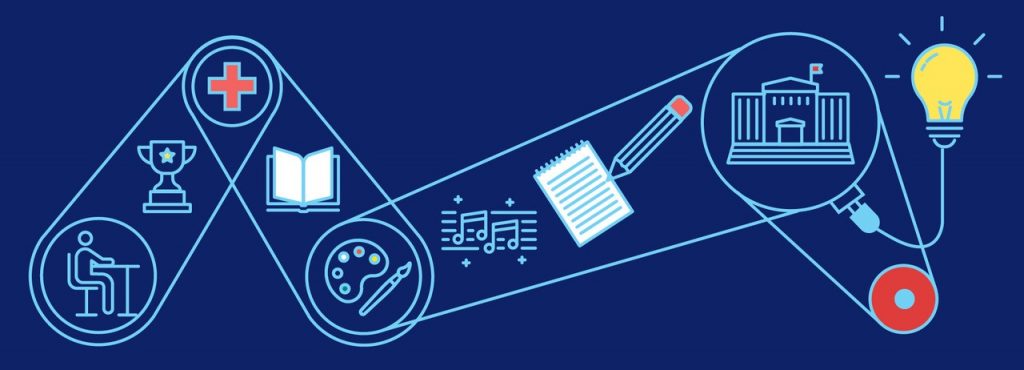Bringing the Blueprint to Life: Pandemic Recovery & the Future of Maryland Schools

One of the great expectations of public education is that it is universal—free and equitable—with the appropriate resources and opportunities available to every student. But that’s not the way it is right now, or the way it has been for years.
Maryland sits on the cusp of a historic moment for public education. The Blueprint for Maryland’s Future is the product of three years of study, debate, and educator-led advocacy. It was passed by a bipartisan majority in the General Assembly last year. But Governor Hogan missed the moment. His veto of the Blueprint in May shut the door…but only temporarily.
The General Assembly has its only opportunity to override that veto during the 2021 General Assembly, which opened on January 13, and MSEA President Cheryl Bost was in Annapolis when the legislature convened to be sure the voices of educators and students are heard. “We’re here because the passage of the Blueprint for Maryland’s Future is more important than ever,” said Bost at a press conference near the Maryland State House. “Before the pandemic, we knew that each of our schools was underfunded by, on average, more than $2 million a year. Before the pandemic, we knew that too often, our Black and Brown students have not gotten equitable resources or opportunities. Before the pandemic, we knew that our schools in high-poverty neighborhoods did not get equitable resources. We knew that all of our students did not have the community schools, career and technical education programs, or early childhood programs they needed to thrive.”

“We must override the governor’s veto of the Blueprint,” Bost said. “We must implement it well and deliver the support and resources that our students, educators, and schools need. This is the key to recovering from this challenging time of disruption and trauma and moving to a brighter future of equity. This is our collective opportunity to provide the public education every single child in Maryland deserves.”
Overriding the veto of the Blueprint will launch a decade of programs that address longstanding inequities that disproportionately affect students living in areas of concentrated poverty. The pandemic has laid bare the desperate need to create strong schools in every neighborhood by providing additional support to struggling learners, hiring more educators and increasing their pay, expanding access to career and technical education, and putting in place more community schools and wraparound services for students.

Overriding the governor’s veto of the Blueprint will also restore the Built to Learn Act, a $2.2 billion investment in school construction. The veto override means repairs will begin on crumbling and unhealthy schools, and desperately needed local jobs and economic opportunities will be generated through these infrastructure projects.
As session began, Gov. Hogan remained opposed to these initiatives, saying he hoped legislators would not override his vetoes. His singular intransigence makes MSEA’s advocacy ever more critical to ensure these measures are enacted to recover from the conditions that have shortchanged students, not just during the pandemic but for years.
The veto cannot stand. We must protect our students and lobby for their success by telling our stories and sharing them with legislators now. We must also make sure our voices are heard in debates over the companion legislation that will adjust timelines and sequencing that the governor’s veto threw off course.

Debates will likely include getting students the supplemental instruction and tutoring supports they need earlier through small group instruction, accelerating the expansion of community schools and programs, and additional legislation to address the digital divide that has affected the teaching and learning of too many educators and students.
“We must override the governor’s veto of the Blueprint,” Bost said. “We must implement it well and deliver the support and resources that our students, educators, and schools need. This is the key to recovering from this challenging time of disruption and trauma and moving to a brighter future of equity. This is our collective opportunity to provide the public education every single child in Maryland deserves.”

